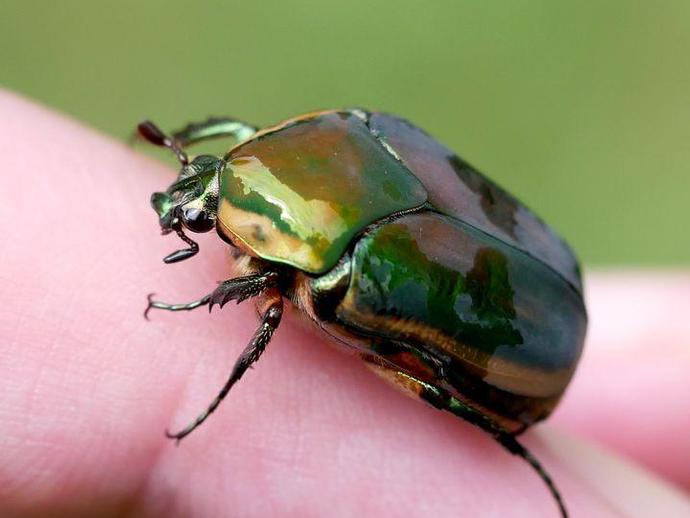June 5, 2021
We're reaching into the archives for today's #BenInNature update presented by our friends at Carter Bank & Trust! The following post was originally published on June 29, 2020.
When I was a little kid, my grandpa showed me how to tie a string around the leg of a green June beetle (Cotinis nitida). The beetle will take flight, pull all the slack out of the string, and then fly around your head in a circle. This is probably not the nicest thing to do to June beetle, but it was pretty entertaining!
As their name suggests, these beetles start showing up around June here in southwest Virginia, and they can usually be spotted flying low over yards. It's believed that they're attracted to decaying organic matter because it provides a good place to lay their eggs. Anecdotally, I remember that I would always see a ton of June beetles at the spot where my grandpa dumped all of his old grass clippings, likely for this same reason.
The larvae of these beetles are large white grubs that burrow down about a foot into the soil and emerge at night to feed on thatch and other decaying plant material. Even though the grubs have legs, they move by laying on their backs and wriggling forward, looking almost like caterpillars!
While the grubs are not terribly destructive compared to some beetle larvae, the adults will feed on a variety of fruits, and they're especially attracted to rotting fruit. However, adult June beetles are not nearly as destructive as another species of beetle that we'll be looking at tomorrow.
ABOUT #BenInNature
Social distancing can be difficult, but it presents a great opportunity to become reacquainted with nature. In this series of posts, Administrator of Science Ben Williams ventures outdoors to record a snapshot of the unique sights that can be found in the natural world. New updates are posted Monday - Friday, with previous posts highlighted on the weekends. This series of posts is made possible thanks to the support of VMNH Corporate Partner Carter Bank & Trust (www.cbtcares.com).
NATURE PHOTO IDENTIFICATIONS
If you discover something in nature that you would like help identifying, be sure to message us right here on Facebook with a picture (please include location and date of picture) and we'll have our experts help you identify it!

 Hours & Admissions
Hours & Admissions Directions
Directions

